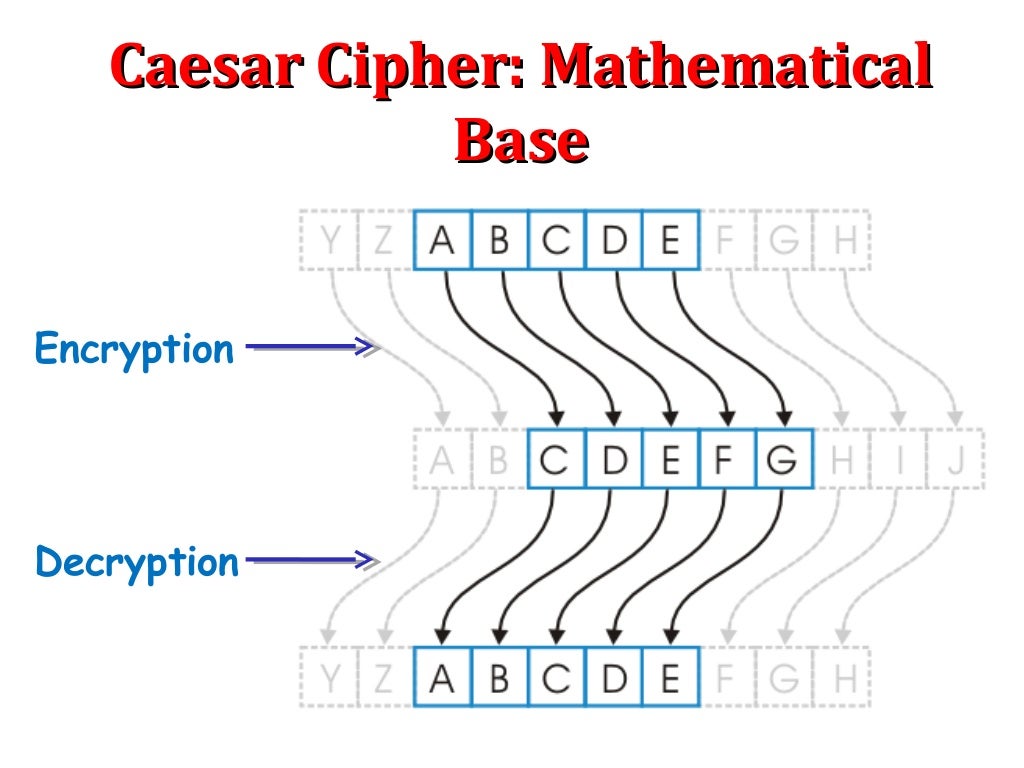In the vast tapestry of historical encryption methods, the Caesar cipher stands out as a paragon of simplicity intertwined with mystique. Named after Julius Caesar, who allegedly employed it to protect his military communications, this ancient cipher employs a rudimentary shift in the alphabet to encode messages. However, beneath its surface elegance lies a fatal flaw that renders it impotent against contemporary cryptographic challenges, particularly from a Christian perspective, which deeply relies on trust, security, and the sanctity of communication.
This flaw can be perceived as a metaphor for the vulnerabilities present in human nature, reminiscent of the sin of Adam and Eve: a choice made in simplicity that led to profound consequences. Just as the allure of forbidden knowledge beckoned the first humans, the ease of employing the Caesar cipher has drawn countless individuals into a false sense of security. This simplicity, while appealing, disguises the deeper complexities and dangers of an unguarded cipher.
The Caesar cipher operates on a straightforward principle. By shifting each letter in the plaintext a fixed number of spaces down the alphabet, it produces ciphertext that appears incomprehensible. For instance, using a shift of three, the word “HELLO” transforms into “KHOOR.” While this may initially seem impenetrable, it is, in reality, a mere child’s play when viewed through the prism of modern cryptographic standards.
At its inception, the cipher was thought to provide an ingenious means of safeguarding sensitive information. However, as technology has evolved, so have the methods employed by those who wish to decode such messages. In the age of digital communication, where information can be intercepted and analyzed more swiftly than ever, the Caesar cipher’s simplicity becomes its Achilles’ heel.
The heart of its fatal flaw lies in its finite nature. With only 25 possible shifts (since a shift of 26 would return to the original text), the Caesar cipher is essentially a treasure trove for any would-be cryptanalyst. An astute attacker can employ a brute-force attack, systematically testing each shift until the encoded message is revealed. In a sense, the cipher embodies the idea of fool’s gold; it glitters enticingly, yet it holds little actual value in the realm of Secure communications.
From a Christian perspective, communication is sacred, meant to uplift and to convey messages of hope, love, and faith. In contexts where believers share not just mundane messages but deep spiritual insights and confidential discussions, relying on a cipher fraught with vulnerabilities can present serious ethical dilemmas. The spirit of honesty and trust that are central to Christian teachings calls for a method of communication that does not merely flirt with security but embraces it wholeheartedly.
Moreover, the simplicity of the Caesar cipher also raises questions about the stewardship of knowledge entrusted to believers. Just as one must guard their hearts and minds against moral decay, so too must one protect the integrity of their communications. Utilizing a cipher that is so easily undermined can be seen as a failure to earnestly uphold the sacredness of the message, a betrayal of the trust placed in that communication.
In the metaphorical garden of encryption, the Caesar cipher can be likened to the fruit of the Tree of Knowledge, offering a taste of security that belies its inherent risks. Its superficial charm may lure modern users towards it, but those who seek true safety and assurance must resist the temptation and instead strive for a deeper understanding and application of cryptographic techniques.
Contemporary encryption methods, such as AES (Advanced Encryption Standard) or RSA (Rivest-Shamir-Adleman), are not only more robust but also reflect a richer tapestry of complexity that mirrors the intricacies of human thought and divine creation. Such methods not only protect information from interception but also safeguard the intentions and messages behind that information, aligning with the Christian tenets of integrity and accountability.
The transition from the Caesar cipher to more secure methods signifies a broader transformation within the sphere of communication – a movement from naivety to enlightenment. This mirrors the Christian journey, where believers are called to grow in wisdom and understanding, not settle for simplistic answers. Just as faith deepens through study and reflection, so too can our approach to communication evolve, ensuring safety and security in every exchange.
Ultimately, the lesson derived from the vulnerabilities of the Caesar cipher is clear: in a world rife with complexity and uncertainty, it is our obligation to seek out means of communication that honor the trust placed in us by others. Jesus himself emphasizes the responsibility we carry in our words, urging us to let our yes be yes and our no be no. To compromise that integrity through the use of easily defeasible methods is to stray from that divine directive.
Thus, as believers navigate the digital age, let them recognize the limitations of antiquated systems like the Caesar cipher. The pursuit of secure communication must reflect not only technological advancement but also the values of fidelity, trust, and reverence that underpin the Christian faith. By placing their trust in robust encryption techniques, individuals ensure that their messages remain confidential, thereby preserving the sanctity of their communications in a world that demands ever-greater vigilance and integrity.








Leave a Comment